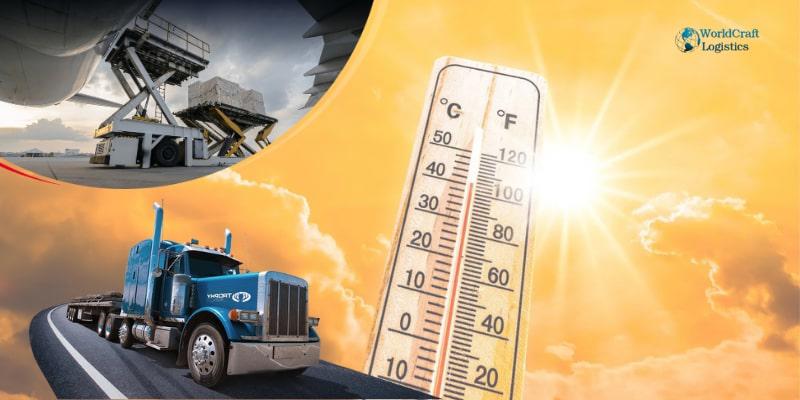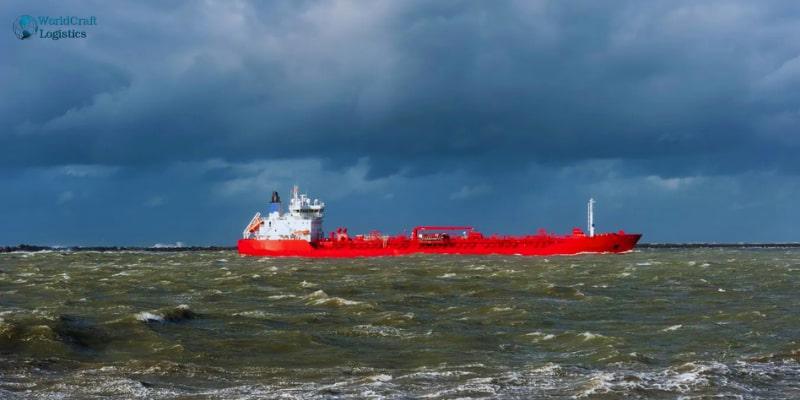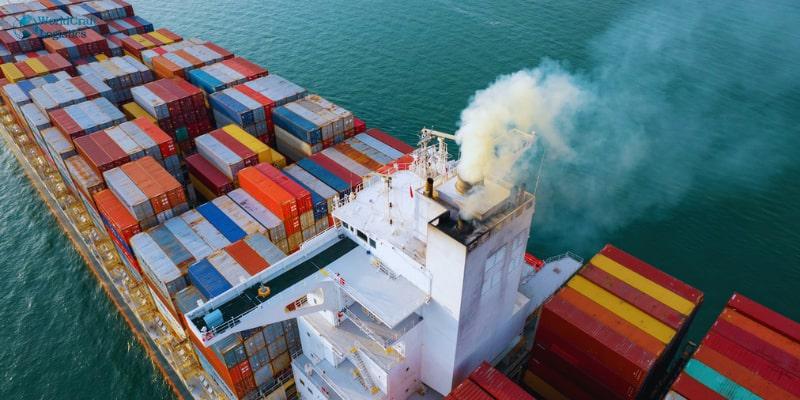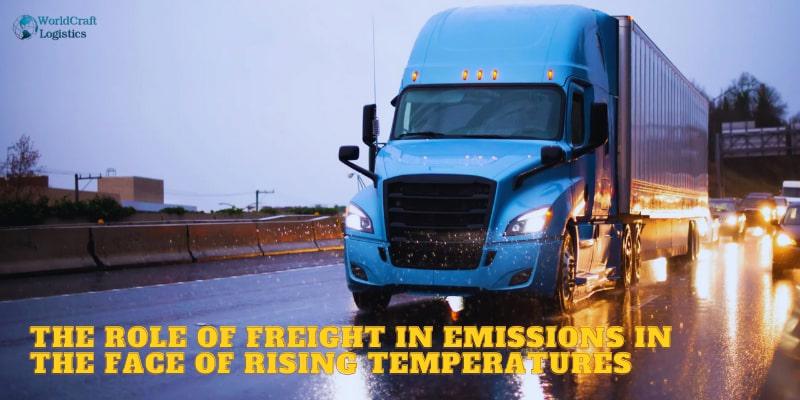
Starting June 1st, 2023 Our warehouse fee will be $0.65/cubic foot per month
In effort to lower the warehouse storage fee during inflation, we have went narrow aisle racking.This construction took us four months but the project is finally completed. With narrow aisle racking, we are able to drop storage by 24%.We as partners will go through this inflation together.
11/08/2023
The world is currently experiencing a surge in temperatures, with some locations experiencing record heat waves. Find out now about the topic The Impact of High Temperatures on Freight, which is of interest to many businesses. In this article, Worldcraft Logistics will give you specific problems and the most effective solutions.

Various nations and continents are being affected by this alarming trend of rising temperatures that is being attributed to climate change. Heat waves have caused sweltering summers, protracted droughts, and harsh weather conditions in many different places of the world. Wide-ranging effects of these extreme temperatures include those on ecosystems, agriculture, human health, and energy use. In order to address climate change and lessen the negative consequences of excessive heat on the environment and societies around the world, there is an increasing need for international cooperation and prompt steps in response to this worrying trend.
The seamless flow of goods and commodities across regions and boundaries is crucially dependent on freight transit in logistics. The freight industry, however, is faced with new difficulties in coping with the impact of excessive heat on cargo transportation as global temperatures continue to rise as a result of climate change. The effects of high temperatures can be extensive, affecting not only the quality of the product but also the safety of the workforce and the environmental impact of transportation operations, from perishable items to delicate electronics.
Modes of transport that are easily affected by temperature such as air transport, ocean freight forwarding, delivery of goods by truck,...

The quality of many freight goods is seriously harmed by high temperatures, especially perishable items like dairy products, fruits, and vegetables. These goods are quite susceptible to temperature changes and can quickly degrade in extremely hot environments. To guarantee that these products reach consumers in the best possible condition, maintaining a controlled and stable temperature throughout the supply chain becomes a crucial task.
Electronics
Heat damage is a major concern for electronics, including computers, smartphones, and numerous electronic components. Elevated temperatures have the potential to decrease the lifespan of these devices by causing thermal stress and component breakdown. In addition to electronics, some chemicals and hazardous materials also have specified temperature limits that, if exceeded, can cause harmful reactions or spills. In order to prevent major losses and potential safety risks, proper temperature-controlled storage and transportation are essential.
Packaging
In order to minimize the impact of high temperatures on freight, the choice of packaging materials becomes essential. When exposed to intense heat, plastic materials, which are frequently used for packaging, can deform, melt, or lose their structural integrity. This jeopardizes product protection, especially for fragile objects like glassware or electronics. To protect cargo during transportation, manufacturers and logistics firms must invest in heat-resistant packaging options.
By combining cutting-edge technology with collaborative efforts across the supply chain, you can significantly enhance the protection of perishable goods and maintain their quality from production to delivery.

While the subject of high temperatures and freight frequently focuses on the cargo, it is important to remember that the crew engaged in logistics activities is also at risk. In hot weather, heat injury becomes a serious worry, especially for employees who handle heavy objects, load and unload freight cars, and operate heavy machinery. Heat-related ailments like heat exhaustion and heatstroke can result from prolonged exposure to high temperatures and can have serious negative effects on a worker's health and productivity.
Preventing and managing heat injury is essential for preserving a safe and effective workforce because heatstroke poses a significant risk to workers.
Certainly! Let's tailor those tips specifically for the logistics field:

High temperatures can worsen energy use in shipping freight and raise greenhouse gas emissions. In order to maintain optimum temperatures during periods of intense heat, cooling systems in refrigerated trucks and warehouses as well as air conditioning in the drivers' cabins require additional energy. As a result, logistical activities use more gasoline, which increases their carbon footprint.
Increased greenhouse gas emissions from freight transportation have unsettling effects since they worsen the circumstances that cause extreme weather and contribute to global climate change. With the additional energy used during heat waves, the transportation sector's already large contribution to greenhouse gas emissions is made much worse for the environment.
Your green initiatives are spot-on for reducing the carbon footprint in logistics! Let's expand on those:
How do these resonate with your approach to sustainable logistics, or is there anything specific you'd like to delve deeper into? See the article now: What is Green Logistics and the positive impact on Eco-Friendly Supply Chains

High temperatures provide a complex challenge to freight that must be adequately addressed via careful thought and deliberate action. Logistics organizations must adopt a proactive strategy to address the negative consequences of excessive heat, from protecting the health of employees to maintaining product quality and avoiding environmental damage. The freight industry can overcome the problems posed by rising temperatures while assuring the secure and effective movement of goods in a world that is continually getting warmer by investing in appropriate training, temperature-controlled solutions, real-time monitoring, and sustainable practices.
In the scorching landscape of logistics, Worldcraft Logistics is committed to weathering the heat and delivering excellence. As we've delved into the profound impact of high temperatures on freight, our journey has been one of enlightenment and innovation. Armed with cutting-edge technologies, a climate-conscious workforce, and a commitment to sustainability, we navigate the heatwaves with precision. Together, let's forge a future where the impact of high temperatures on freight becomes not a challenge, but an opportunity for growth. Worldcraft Logistics invites you to join us on this journey - where every shipment isn't just a delivery, but a testament to resilience, efficiency, and a cooler, greener tomorrow.
SEO
Digital Marketing/SEO Specialist
Simon Mang is an SEO and Digital Marketing expert at Wordcraft Logistics. With many years of experience in the field of digital marketing, he has shaped and built strategies to effectively promote Wordcraft Logistics' online presence. With a deep understanding of the logistics industry, I have shared more than 500 specialized articles on many different topics.

Hot News
08/05/2024

Hot News
02/23/2023

Hot News
02/23/2023

Hot News
02/06/2023
Hot News
02/07/2023